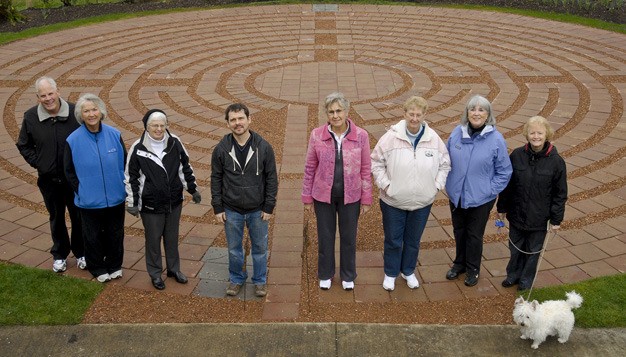In these early days of spring, signs of new growth abound on Mercer Island. Cherry trees are beginning to blossom, daffodils sway gently in the breeze, and the familiar hum of lawn mowers can be heard for the first time in months. Nowhere is this new growth more apparent than it is on the campus of Emmanuel Episcopal Church. Home to the Island’s first labyrinth, Emmanuel has laid the path for new growth through meditation, prayer and self-discovery.
Labyrinths date back over 3,500 years and conjure such images as the legend of Theseus and the Minotaur. In medieval Europe, labyrinths were often walked as a pilgrimage or for repentance. To walk with a purpose of pilgrimage required a questioning, searching spirit with the hope of becoming closer to God. At times, these walks would serve as a substitute for an actual pilgrimage to Jerusalem. When used for repentance, the faithful would walk on their knees.
A common misconception is that labyrinths and mazes are one and the same. Mazes contain cul-de-sacs and dead ends. They have more than one entrance, more than one exit, and are designed to make us lose our way. Labyrinths have the opposite purpose — they are designed to help us find our way. A labyrinth has only one path. The way in is the way out. By trusting the flow of the sacred patterns, labyrinths can help us ground ourselves.
Emmanuel’s new labyrinth is modeled after one of the world’s most famous labyrinths located at Chartres Cathedral near Paris, France. In walking the eleven-circuit Chartres-style labyrinth, the walker meanders through each of the four quadrants several times before reaching the goal of enlightenment symbolized at the center. The four arms of the cross are readily visible and provide significant Christian symbolism.
Bringing the labyrinth to Emmanuel Episcopal Church required the same spirit of patience, openness and self-discovery required by those who use labyrinths. After an eight-year process of contemplating different patterns, sizes and locations, the Island’s first labyrinth was completed in late 2010. Much like a labyrinth itself — with the circle symbolizing wholeness — the project was made possible by the contributions of countless volunteers, donors and community members.
Like a bed of newly planted spring flowers, Emmanuel’s labyrinth is designed to be enjoyed by all. A celebration and dedication of the labyrinth will take place on Saturday, April 2, at 2 p.m. Rain or shine, the Right Reverend Gregory Rickel, Bishop of the Diocese of Olympia, will lead prayers of blessing and dedication.



